Drawing a Blank on Brain-Computer Interfaces?
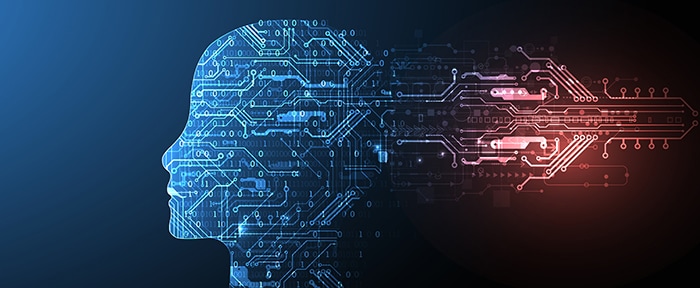
Image Source: Omelchenko/Shutterstock.com
By Paul Golata, Mouser Electronics
Published July 22, 2021
The cursor flashes at me, taunting me to put down something. I have nothing, so I amuse myself by clocking the refresh rate for a minute to ascertain its value. I find it is blinking at a rate of 50Hz. Each flash is telling me I have nothing so far. It feels as if a Neuralizer from the movie, Men in Black (1997), erased my thoughts. It is the age-old battle for most writers: How to start a good story, how to write an article to engage and inform. How am I to get the thoughts and ideas in my brain onto the page? It is a battle of transferring what I wish to express into the published word.
If only I had a Brain-Computer Interface (BCI) to intelligently augment my brain with endless amounts of valuable data, stirring an instant stream of consciousness from my keyboard onto the computer screen.
Well, you are not here to learn about my writing problems. I’m here to discuss BCIs.
What is Brain-Computer Interface (BCI)?
BCI applications are rapidly transforming the medical device industry and will continue so because of their benefits. BCI applications refer to devices that allow users to interact with computers, measuring the user’s brain activity. The electrical activity is measured most commonly with an electroencephalogram (EEG), recognizing the energy and frequency patterns of the brain. Artificial intelligence (AI) and machine learning (ML) enable greater accuracy and reliability in evaluating and developing BCI applications. In the following, we will examine this field and some of the critical electronic components within the signal chain required to measure brain waves and other bodily functions and how AI puts it all together.
BCI & EEG
The human brain produces oscillating electronic voltages. The typical value of these voltages is minimal, measured in units on the order of millionths of volts. The most common way to collect and analyze these brain-wave voltages is through an electroencephalogram (EEG). An EEG is an electrophysiological monitoring method to record electrical activity on the scalp. It captures signals directly related to the brain waves happening directly under the skull (Figure 1).
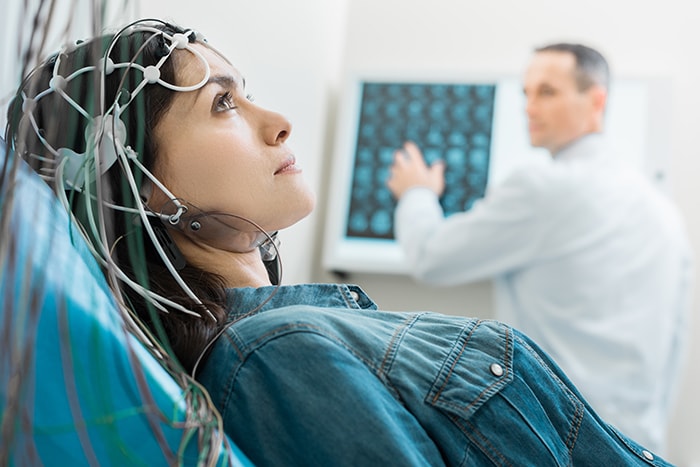
Figure 1: A woman undergoing non-invasive electroencephalography (EEG). (Yakobchuk Viacheslav/Shutterstock.com)
BCI via an EEG can be unidirectional (one-way) or bidirectional (two-way). Bidirectional allows information to flow both ways, thus opening up the brain to feedback and future adjustments. EEGs can be invasive, semi-invasive, or non-invasive. Invasive EEGs involve directly locating and connecting devices into the human brain. Semi-invasive EEG can be placed between the brain and the skull. Non-invasive is generally done by a cap placed on the skull with various electrodes. EEGs provide temporal resolution of @ 0.05 seconds and spatial resolutions on the order of 10mm. Other techniques, besides the electrical technique employed by EEGs, can be used to gather data. These techniques can employ magnetic, metabolic, or other forms.
Brain waves are classified based upon their frequency into one of five general categories (Table 1). Medical researchers break these into bands because each band represents a distinct way that a brain operates in performing its functions. For example, a critical activity such as memory and recollection happens especially, but not exclusively, in the theta band. Researchers use these bands to analyze what might be going on if it appears signals are too little, too great, or an optimal amount.
Table 1: The five general categories of brain wave bands. Each frequency range is a nominal value and not necessarily absolute. (Source: Author)
|
Band |
Frequency (Hz) |
|
Delta |
0.5-3 |
|
Theta |
3-8 |
|
Alpha |
8-12 |
|
Beta |
12-38 |
|
Gamma |
38-42 |
An EEG acquires the brain wave signals and digitizes them. They are then signal processed where features can be extracted and translation algorithms that perform classifications. They also can be printed out or recorded for future analysis. Signal outputs can be utilized to form device commands to provide instructions related to motor control, locomotion/movement, and environmental conditions or stimuli. BCI helps allow disabled people to have more control of their external environments.
BCI and the Human Condition
Because of human biology, our senses and our intelligence have fundamental limitations. It is conceivable that brain-computer interfaces and implants could enhance or provide new sensory information and augment biological capabilities. A primary consideration in merging man and machine is how the machine and the human extract and exchange information between themselves on a real-time basis because they operate in two different domains. More work remains to be done to understand how the mutual coordination of individually addressable neurons directing the brain can function in its environment while maintaining coordination with the digitally addressable domain of the interface.
BCI Research
BCI is also being investigated to look at areas to help humanity, including restoring or enhancing human vision, motor recovery for disabled limbs, and brain mapping to assist toward restoration and correcting various neurological damage and disorders. Brain mapping can lead to a greater understanding seeing how human thought is realized into human action. It can lead to augmented human learning, new or enhanced human sensing, and new embedded autonomous neural systems. Let’s look at two examples of where BCI can continue to evolve and lead.
Superhuman Cognition
Billionaire Elon Musk is actively investigating BCI issues. He is one of the founders of Neuralink Corp., a neurotechnology company developing implantable brain-machine interfaces. Neuralink is working on building better tools for communicating with the brain. These founders believe that with the right team, the applications for this technology are limitless. Neuralink is exploring the possibility of embedding into the brain ultrafine electronic threads that permit neural activity.
One of Musk’s stated goals is to achieve “superhuman cognition.” Inventor and futurist Ray Kurzweil believes that human intelligence is characterized by its remarkable ability to recognize patterns. He views human intelligence as an evolutionary, self-organizing hierarchical system operating in the context of a biological pattern-recognition machine. Musk is motivated to achieve superhuman cognition based upon his desire for humanity to negotiate more proficiently in understanding the emergence and spread of more powerful AI, which is becoming ever more adept in its excellence at pattern recognitions.
New Senses
When looking at how BCI can enhance human senses, one can consider the case of Neil Harbisson, who is cofounder of the Cyber Foundation. He has been recognized as the world’s first cyborg. Born color-blind, Harbisson has permanently installed an antenna into his skull so that he can now literally hear color, substituting his auditory sense in place of his visual limitation. Harbisson is actively advocating a future in which humans incorporate technology into their bodies.
Sensor Hubs
Supporting these efforts, sensor hubs are being employed in various ways to collect additional biometric information beyond BCI. Sensor hubs use multiple sensors and a microcontroller to collect and analyze numerous human parameters not directly accessed by brain waves. These can include collecting information about the human pulse heart rate, pulse blood oxygen saturation (SpO2), and estimated blood pressure.
Ensuring High-Quality Data
Because brain signals are so small, the entire electronic signal chain is prioritized in its design to minimize noisy, spurious, or artifact signals. The patient might induce these sources through their physical movements, sweating, eye movements, heart rhythms, and the like. Electrical errors can result from 50Hz/60Hz noise, electrode-skin contact issues, and cable movements.
Successful electronic component selection will focus on utilizing high-precision, low-noise, high-resolution signal chain products. Low-noise amplifiers (LNA), unity-gain buffers, and precision analog-to-digital converters (ADCs) are chosen to prevent the introduction of unwanted signals into the chain while providing the ability to resolve data accurately and reliably correctly. Differential amplifiers and bandpass filters are also employed to ensure only high-quality data is transmitted.
ADCs for EEGs
An example of the type of ADC that can be employed in an EEG signal chain designers might look to include is Analog Device’s AD7177-2 32-Bit Sigma-Delta Analog-to-Digital Converters (ADC) (Figure 2). These ADCs are designed as low-noise, fast-settling, multiplexed, and 2-/4-channel (fully/pseudo-differential) Σ-Δ ADC for low bandwidth inputs. The AD7177-2 ADCs have a maximum channel scan rate of 10kSPS (100µs) for fully settled data. The output data rates range from 5SPS to 10kSPS. The AD7177-2 ADCs integrate critical analog and digital signal conditioning blocks to enable designers to configure an individual setup for each analog input channel in use.
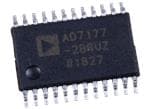
Figure 2: Analog Devices Inc. AD7177-2 32-Bit Sigma-Delta ADCs. (Mouser Electronics)
Similarly, Texas Instruments ADS1299-x 24-Bit Analog-to-Digital Converters (ADCs) are four-, six-, and eight-channel, low-noise, 24-bit, simultaneous-sampling Delta-Sigma (ΔΣ) Analog-to-Digital Converters (ADCs) (Figure 3). The ADS1299-x incorporates all commonly-required features for Extracranial Electroencephalogram (EEG) and Electrocardiography (ECG) applications. With its high integration and exceptional performance levels, the ADS1299-x enables scalable medical instrumentation systems at significantly reduced size, power, and overall cost.
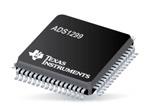
Figure 3: Texas Instruments ADS1299-x 24-Bit Analog-to-Digital Converters. (Mouser Electronics)
AI with BCI
AI and its subsets, including machine learning and deep learning (DL), are enabling approaches in EEG-based BCIs (Figure 4). DL provides the tool to offer automatic classifications of EEG signals. This effort allows for the data to be utilized in various applications and other convolutional neural networks (CNN) training. At present, human expertise supports AI approaches. The desire is to eliminate artifacts, increase the data quality, and continue to realize gains in AI technology so that measured brain wave signals can continue to exhibit exponential increases in their ability to be classified by AI through DL techniques.
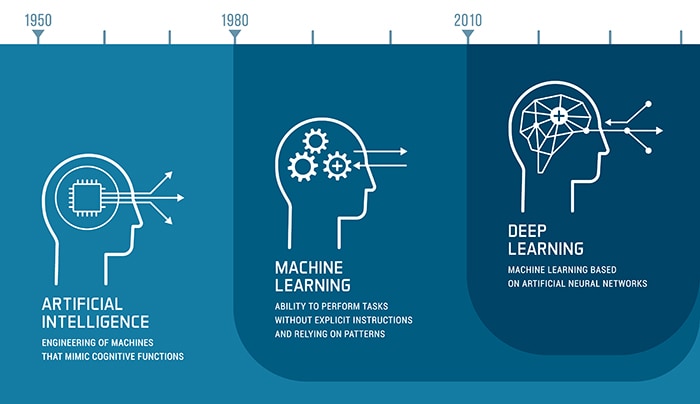
Figure 4: Artificial intelligence, machine learning, and deep learning development over time. (Source: elenabsl/Shutterstock.com)
Conclusion
EEG-based BCI relies on high-performance electronic signal chains. Careful consideration of all critical electronic components required to measure EEG and other bodily functions is essential for a sound and reliable design. AI and DL techniques enable dynamic EEG data to receive better interpretations and allow humanity to realize more benefits from BCI. BCI will continue to be an emerging method for human-machine interfacing. And one day, it might offer a cure to any mental block we encounter, especially the empty page that any writer will eventually face.